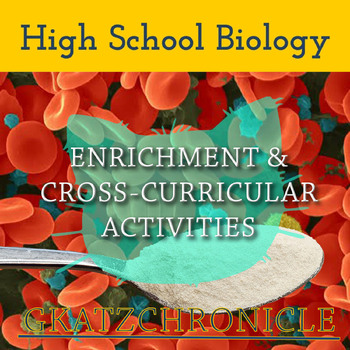MAKE A 3D BLOOD MODEL with Psyllium! ENRICHMENT / HUMAN BODY SYSTEMS
- Word Document File
Description
This activity guides students in building a three-dimensional blood model. Adults have approximately 1.2-1.5 gallons (or 10 units) of blood in their bodies. Using that as a guide, psyllium powder and water are used to construct plasma. Three types of pasta are used for other blood components (red and white blood cells and platelets).
For further visualization purposes, segments of the model can be displayed in Petri dishes. Additionally, students are prompted to make connections after viewing a prepared slide of human blood under a microscope.
This activity includes 3 pages with:
An article
Six open-response questions
Materials list
Answer Key
Get TPT credit for future purchases!
Go to your "My Purchases" page. Next to each purchase, click on the "Provide Feedback" button. Give a rating and leave a comment about the product. When you give feedback, TPT gives you credits that can lower the cost of future purchases.
Rate this product and earn TPT CREDIT!
Click the green star under this store's name and Follow GertrudeKatzChronicle
Then you will be the first to know about sales, freebies and product launches!





